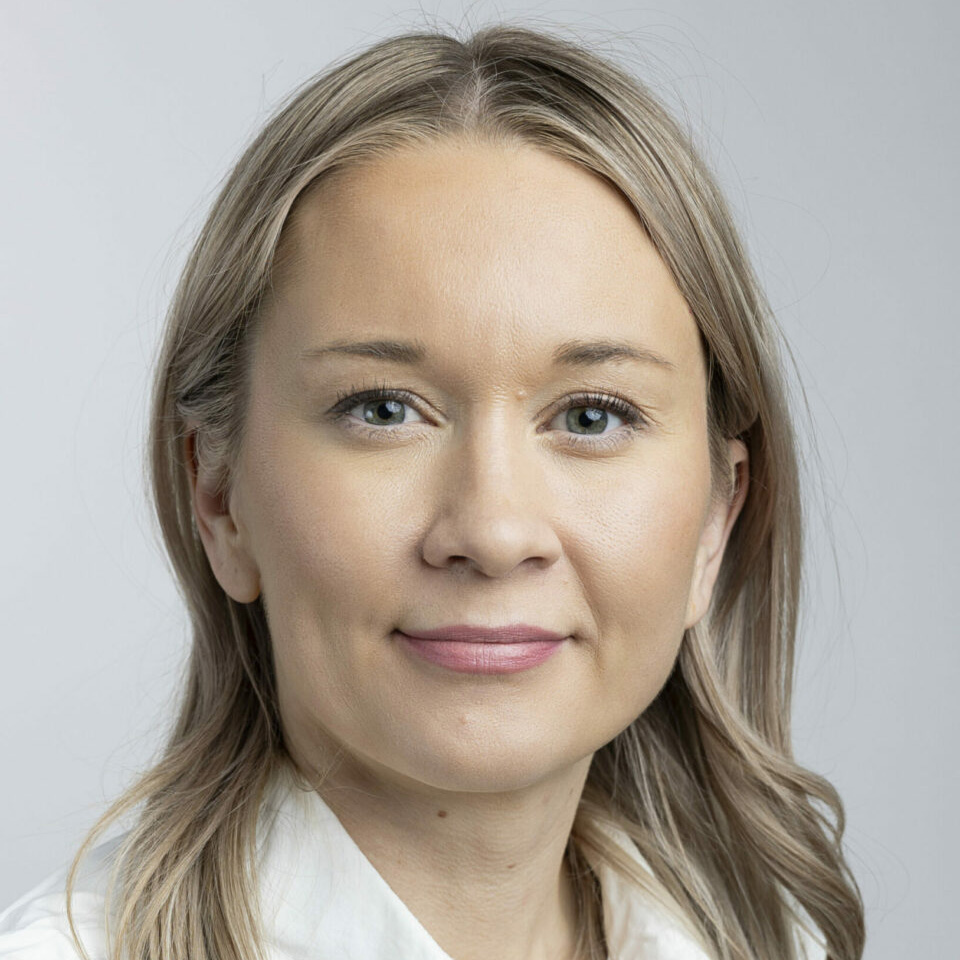Hydrogen in Oulu


Why Oulu region
Welcome to Oulu, the northern hydrogen hub. The Oulu region is home to over 400,000 people and almost 50,000 businesses.
Oulu is an international tech hub and university city where one of every three inhabitants has a university degree. Green molecules – hydrogen and climate-friendly hydrogen derivates – are fuelling our latest growth wave.
Oulu’s GDP per capita is almost €40,000 – well above the EU average. It invests more in research and development than any other Finnish city.
Here are eight reasons why you should establish your hydrogen industry in the Oulu region:
- The Oulu region has abundant, affordable renewable energy sources.
- Hydrogen infrastructure will connect Oulu to the rest of Europe.
- Biogenic carbon dioxide is available in Oulu.
- Three major sources ensure abundant water.
- Oulu’s port, railways and roads are a part of the TEN‑T core network.
- Oulu’s universities and large R&D investments attract skilled workers.
- Oulu’s diverse ecosystem draws in subcontractors and customers.
- Finnish and EU sources provide funding.
-
- Finnish electricity is among the cheapest in Europe.
- The Oulu region is the largest producer of renewable electricity in Finland.
- Finland’s most robust grids are located in the Oulu region.
Finnish electricity is among the cheapest in Europe. In the first half of 2024, the price of electricity for non-household customers in Finland (€0.0939 per kilowatt hour [kWh]) was lower than anywhere else in the EU.
The Oulu region is the largest producer of renewable electricity in Finland. In August 2024, 37% of Finland’s wind turbines were located in the Oulu region. Moreover, wind and solar power production are increasing.
Excellent conditions for wind and solar power
The Oulu region is an excellent environment for generating wind power. The prevailing wind direction is from the sea. The low population density allows for building wind power facilities without significantly disturbing people, and the tax system allows wind power to benefit the local community.
Total solar irradiance in southern Finland is similar to that in Central Europe. The annual irradiance is also high in Oulu: around 1 000kWh/m²–1 100kWh/m² per year.
In addition to harnessing wind and solar power, the Oulu region produces electricity through the City of Oulu’s electricity generation, district heating power plants, power plants connected to industrial plants and hydroelectric power plants on the Iijoki and Oulujoki rivers.
Functioning electricity network could be extended
Since Finland has only one price zone for electricity transmission, cheap renewable electricity is available from other regions if needed.
The Oulu region has reliable electricity transmission because it has the most robust electricity connections in Finland. Fingrid manages several connections to the national grid. Fingrid’s 400-kilovolt substations closest to the large industrial areas are the Isokangas substation in the north and Pikkarala and Pyhäselkä in southeastern Oulu. All substations have the potential for 1,000 megawatts of new connection capacity. Additionally, the Oulu area is home to the local grids of Oulun Energia Sähköverkot, Haukiputaa Electricity Cooperative, Etelä-Pohjanmaan Voiman Alueverkko and Caruna.
Fingrid and other electricity network operators are currently expanding the electricity network in the Oulu region to ensure that the network can continue to accommodate the rapidly expanding electricity production.
Learn more:
-
- Renewables Finland: Projects and wind turbines in Finland
-
- Renewables Finland: Solar power in Finland
- Gasgrid Finland plans to build hydrogen transport infrastructure in the Oulu region.
- Once completed, the new international hydrogen pipeline network will connect the Oulu region’s hydrogen producers to hydrogen users, such as the steel industry in Sweden and the chemical industry in Germany.
- The hydrogen pipeline network will link Oulu hydrogen users to producers elsewhere on the Baltic Sea coast, ensuring a continuous and stable supply of hydrogen at stable prices.
Gasgrid Finland, the gas transmission network company responsible for Finland’s national hydrogen infrastructure, plans to build a hydrogen market platform and a pipeline to transport hydrogen through the Oulu region. This infrastructure will form part of Finland’s national hydrogen network, which will comprise more than 1,000km of onshore hydrogen pipelines. Moreover, international pipeline connections will be built.
Finland’s national hydrogen infrastructure is part of an international hydrogen pipeline network in the Baltic Sea region. When fully completed, the planned hydrogen infrastructure will connect hydrogen producers and consumers in the Oulu region – via Sweden and the western Baltic Sea, the Baltic States and Poland – to Germany and the rest of industrialised Europe.
Hydrogen gas infrastructure from Oulu to Central Europe
Gasgrid Finland is currently studying two alternative routes for an underground hydrogen gas pipeline through the Oulu region. Both route options run close to Oulu from the east of the city. Both options provide functioning hydrogen gas pipeline connections to all key areas of the region’s hydrogen industry.
In onshore areas, the gas pipeline is about 1.5m underground. The required right of way for the pipeline is about 5m to 10m wide.
Gasgrid Finland aims to have the hydrogen market and infrastructure operational in Finland by the early 2030s. Hydrogen network licensing is expected to start in 2025.
Additional reading:
- Building Finland’s national hydrogen infrastructure: Gasgrid Finland
- Construction of a hydrogen pipeline around the Bothnian Bay in Finland and Sweden: Nordic Hydrogen Route
- Construction of hydrogen infrastructure connecting Finland and Sweden to Central Europe via the Baltic Sea: Baltic Sea Hydrogen Collector
- In the Oulu region, biogenic carbon dioxide (CO2) is available for producing hydrogen derivatives.
- The pulp and paper industry and combined electricity and heat production (CHP) provide significant sources of biogenic CO2.
- Oulu Energy aims to start capturing CO2 in 2030.
The most significant sources of CO2 for further hydrogen processing in the Oulu region are located near the Oulu port area and the Takalaanila industrial area. The region’s significant sources of biogenic CO2 are large pulp and paper industry units (1+ megatonnes [Mt] of CO₂ per year) and Oulu Energy’s Bio-power plant (0.6 Mt CO₂ per year).
Stora Enso, which operates in the Nuottasaari harbour area, is committed to reducing emissions in its own production and throughout its value chain in accordance with the Science Based Targets initiative’s 1.5‑degree development path. Moreover, as a signatory of the Climate Pledge, Stora Enso is committed to producing net-zero carbon emissions by 2040.
Three major sources ensure abundant water
- In the Oulu region, river water, groundwater and seawater provide sufficient water for industrial needs.
- Oulu Waterworks is ready to cooperate in building the water infrastructure industry needs.
Oulu Waterworks is a municipal utility owned by the City of Oulu. It is responsible for Oulu’s domestic water supply and wastewater treatment. Every day, Oulu Waterworks supplies its customers with 33,000m3 of good-quality domestic water from its networks.
Several water sources ensure the supply of water
The availability of several sources of water ensures a secure water supply in Oulu. In the future, Oulu Waterworks will organise water supply from two different sources, one of which is groundwater.
River water availability is already excellent in Laanila and Oritkari. In the future, it will also be excellent in Pikkarala. Moreover, Oulu Waterworks is currently investigating how to organise the large water supply in Pyyryväinen.
Learn more:
Waterinfo.fi: Regional water situation Kainuu and Oulu-Koillismaa
Oulu Waterworks: About Oulu Waterworks
-
- The Port of Oulu is the largest general port on the Bothnian Bay and is open 24/7 year-round.
- Oulu’s port, railways and roads are part of the Trans-European Transport Network (TEN‑T) core network.
- Oulu Airport is the third largest airport in Finland in terms of passenger numbers.
The Port of Oulu and the main rail and road routes through the Oulu region are part of the TEN‑T core network, as defined by the European Commission. The TEN‑T is a planned network of roads, railways, airports and water infrastructure in the EU maintained to handle high volumes of freight and passengers.
The Port of Oulu has three sections: Oritkari, Nuottasaari and Vihreäsaari. Oritkari mainly handles containers and forest industry products. Nuottasaari handles raw materials for the forest industry. Vihreäsaari handles liquid fuels and bulk products.
The channel to the Port of Oulu has a draught of 12.50m. The port can accommodate ships with a deadweight tonnage of up to 65,000 tonnes (t) and a length of up to 230m. The three sections of the Port of Oulu have a total of 1,460m of quays. The Port of Oulu has excellent road and rail connections.
The Port of Oulu covers an area of 255 hectares. It is, therefore, uniquely equipped to meet the needs of its customers by, for example, building storage and handling halls.
Railways connect Oulu to all parts of Finland
The railway hub in the city of Oulu connects Northern Finland to the national rail network. Furthermore, rail connections running through Tornio connect Finland to Sweden, although differences in track gauges require changing rolling stock. The Finnish network has a track gauge of 1,524mm. Ongoing renovations will allow for introducing European Rail Traffic Management System (ERTMS) signalling at the Oulu yard.
On most of Finland’s network, an axle load of 22.5t is permitted. The maximum permitted speed is 220km/h for passenger trains and 120km/h for freight trains.
Oulu roads are part of Finland’s main roads
One of Finland’s main roads, highway 4 from Helsinki to Utsjoki, and the European roads E8 and E75 run through Oulu.
Oulu Airport, the third largest in Finland, offers about a dozen flights to Helsinki each day.
Learn more:
- Port of Oulu: Largest general port on the Bothnian Bay
- Finnish Transport Infrastructure Agency: Trans-European Transport Network TEN‑T in Finland
- The University of Oulu conducts extensive multidisciplinary hydrogen research.
- One in three people in Oulu has a university degree.
- Oulu has the largest R&D investment per capita of any Finnish city.
The University of Oulu’s extensive multidisciplinary hydrogen research attracts experts to Oulu’s hydrogen industry. The university supports dozens of projects advancing both basic and applied research.
At the University of Oulu, physicists, chemists, chemical engineers, environmental engineers, process metallurgists and materials engineers collaborate to address the challenges involved in transferring, storing and transporting hydrogen and in steel industry processes.
Oulu boosts technological development by investing more in R&D than any other city in Finland. According to Statistics Finland, Oulu spends almost €3,500 per capita per year on research and development.
Oulu is a long-standing technology centre
The Oulu region is home to over 400,000 inhabitants and nearly 50,000 companies. The region’s GDP is €40,000 per capita, compared to an EU average of €35,000.
With more than 1,000 information technology companies employing more than 20,000 people, the Oulu region has for decades been known for its technological excellence.
The city’s size makes it easy for specialists to find housing and jobs for their spouses. Several transport options linking a large city to other parts of the country are important for many professionals.
Oulu has a young and highly educated population
The Oulu region’s population is young and highly educated. Oulu residents are on average 39.6 years old, and one in three of them has a university degree.
The University of Oulu has nearly 15,000 students and almost 4,000 staff members. It is large and technology-oriented and has many doctoral students. The Oulu University of Applied Sciences has almost 10,000 students and 500 staff members.
Learn more:
- University of Oulu: Hydrogen future and sustainable steel
- Oulu University of Applied Science: We are OAMK
- Traditional hydrogen production has already created a hydrogen business ecosystem in the Oulu region.
- A hydrogen innovation ecosystem already exists around the University of Oulu.
The Oulu region is home to a large, coherent ecosystem comprising numerous hydrogen companies that support one another’s activities. Consequently, the region provides an environment conducive to both hydrogen business and hydrogen innovation.
The ecosystem hydrogen companies require already exists in Oulu because the region has experience producing hydrogen in industrial scale. Two plants currently produce hydrogen in Oulu, and other chemical industries have also been active in the region for decades.
The University of Oulu participates in research related to hydrogen and related business areas, such as the green steel and energy efficient hydrogen production.
Companies starting up or operating in the Oulu region and its surrounding areas include:
- Hydrogen producers
- Synthetic fuel producers
- Fertilizer and other chemical producers
- Steel enterprises
- Electricity providers
- Heat users
- Hydrogen logistics and storage businesses
- Transport and other potential hydrogen fuel users
- Consulting firms
- Research entities
- Recruiters
Learn more:
BusinessOulu: Partner for growth and development
- State grants for business investment and innovation are available in Finland.
- Several organisations provide market-based funding.
- Funding from various EU sources is available for businesses.
Foreign-owned companies operating in Finland are eligible for a wide range of government and EU incentives on an equal footing with Finnish-owned companies. For example, companies can apply for investment grants from the Centres for Economic Development, Transport and the Environment (ELY Centres).
Innovation funding is available from Business Finland. Business Finland provides low-interest loans and grants to challenging and innovative projects that could lead to global success stories. Start-ups, SMEs and large companies can benefit from Business Finland’s incentives and funding services.
Finvera and Tesi offer a range of market-based funding opportunities. Finnvera is a specialised financing company owned by the State of Finland, and it is Finland’s official export credit agency (ECA). It provides financing for starting, growing and internationalising enterprises and guarantees against risks arising from exports. Tesi, along with a vast network of Finnish and international investors, makes market-driven minority investments in Finnish companies.
Finland also offers companies tax incentives. For instance, Finland offers a permanent tax incentive for business enterprises that conduct R&D consisting of a basic deduction (100%) and an additional deduction (50%) related to existing R&D costs and an increased deductible amount that depends on how much the company’s R&D activity has grown compared to the previous year.
The EU also provides funding for investing companies. EU finance is largely channelled through the ELY Centres and supports projects developing the competitiveness, operational expertise and operating environment of the SME sector. The ELY Centres focus particularly on start-up businesses and service-sector companies.
Learn more:
- National grants: Centres for Economic Development, Transport and the Environment (ELY Centres)
- Funding: Business Finland
- Funding: Finvera
- Investments: Tesi
Sites
Green transition in large industrial areas in Oulu
Oulu has four areas that are particularly well suited for hydrogen production and for the hydrogen derivates processing industry. Each area has its advantages.
Oulu port area (Oritkari, Vihreäsaari and Nuottasaari)
- The port area’s main strength is logistics. It is well connected by sea, road and rail and already has extensive logistics infrastructure.
- The area’s existing industrial base offers significant synergies.
- Access to water is assured in the maritime area and the huge river Oulujoki runs through the Port of Oulu.
Read more about the port area.
Port of Oulu
Oritkarin sataman vihreän siirtymän teollisuusalue | Oulun kaupunki
Pyyryväinen – ”The Oulu North”
- Pyyryväinen has more land available for development than the other areas – allowing for larger projects. City of Oulu owns 10 km² of land here which is under zoning for chemical industries (T/kem)
- A railway connection to the area is planned.
- Increasing the area’s electricity capacity is particularly easy.
Read more about Pyyryväinen. — Pyyryväisen osayleiskaava | Oulun kaupunki
Takalaanila
- The area’s existing industrial and energy production provides a wealth of synergies.
- The logistical links and other infrastructure built to meet the needs of the industries already operating in the area will be immediately available to the new enterprises.
- The district heating network and thermal storage are particularly accessible in Takalaanila.
- Oulun Energia and P2X Solutions are collaborating on an exciting project to build a large industrial-scale hydrogen production plant in Oulu. This plant, planned for the Laanila industrial area, will have a capacity of up to 100 megawatts (MW) and will include an electrolysis plant, a carbon capture plant, and storage facilities for hydrogen and carbon dioxide.
Pikkarala – the future potential area
The potential future industrial area is located at the crossroads of electricity transmission links.
The area is not zoned.
The proximity of the Oulujoki river ensures an abundant water supply.
Oulu port area (Oritkari, Vihreäsaari and Nuottasaari)
- The port area’s main advantage is logistics. It is well connected by sea, road and rail and already has considerable logistics infrastructure.
- The area’s existing industrial base offers significant synergies.
- Access to water is assured in the maritime area.
The Port of Oulu area consists of three separate port areas: the ports of Oritkari and Nuottasaari and the Vihreäsaari oil port and associated industrial areas. It offers excellent transport connections by both sea and land. It is located near the centre of Oulu, in the Oulujoki estuary and on the shores of the Bothnian Bay, and it is part of the Trans-European Transport Network (TEN‑T) core network. Currently, the shore is being expanded by fill.
About 500 vessels visit the ports each year. The ports handle around three million tonnes of cargo annually. The City of Oulu owns the company Port of Oulu.
The ports of Oritkari and Nuottasaari are connected to the other parts of Finland by rail. New tracks will speed up connections to Oritkari, improve the efficiency of freight traffic in the area and enhance the functionality and safety of the railway yard.
Synergies with other industries
The port area’s location is ideal for new projects that would benefit from synergies with existing industry. The pulp and chemical industries, among others, have long operated in the area.
The area contains significant power generation plants. Two 110-kilovolt (kV) lines, one of which is owned by Stora Enso, will be located in the harbour area. In Oritkari, options for aligning the hydrogen pipeline and the 400kV power line have been explored.
Biogenic carbon dioxide sources are located in the area. Since the area’s industry already produces district heat for the district heating network, waste heat could be used for the network. Furthermore, there is a water supply network for industrial needs. The water in the area is fresh brackish water, which can be used in various ways.
The Oulu port area is suitable for such facilities as:
- Synthetic fuel production
- Battery chemicals production and battery assembly plants
- Circular economy parks
The Oulu port area’s specialised advantages include:
- Potential hydrogen users
- Synergy with other industries
- Easy transport of products from the port to world markets
- Ample space for hydrogen plants
- Available train tracks and ongoing road improvements
- Possibility of feeding waste heat into the district heating network
- The potential future industrial area is located at the junction of national electricity networks.
- The proximity of the River Oulu ensures an abundant water supply.
The Pikkarala potential industrial estate is an undeveloped area about 15km from the centre of Oulu. Its location at the intersection of electricity transmission networks makes it an optimal location for electricity-intensive industries. The Pikkarala substation has the potential to accommodate 1,000 megawatts of consumption. Furthermore, the Pikkarala site has been pre-screened for 400-kilovolt power line alignment options.
Gasgrid’s preliminary plans for Finland’s national hydrogen network place pipelines close to the Pikkarala site. Preliminarily Pikkarala might also be suitable for underground hydrogen storages.
Pikkarala can accommodate a lot of industry
In the future Pikkarala could be available for use as a greenfield site. The area is mostly sparsely populated countryside. Moreover, there is a lot of additional privately owned undeveloped land in the area.
Pikkarala is mainly accessed by road. The railway runs past Pikkarala from the north of the area. The City of Oulu is currently investigating the possibility of using the rail link for industrial purposes.
The Oulujoki river runs past Pikkarala. Pikkarala also has a significant aquifer, but its yield is not sufficient to significantly increase water consumption.
The area could be suitable for such facilities and activities as:
- data centres
- hydrogen industry facilities
- battery industry installations
- circular economy parks
- electric battery storage.
- The abundance of available land allows for development, including large-scale projects.
- A railway line is planned for the area.
- Increasing the area’s electricity capacity would be particularly easy.
Pyyryväinen is a new and undeveloped large-scale industrial area of up to 800 hectares less than 10km from the centre of Oulu. It is located between the Oulu Välikylä industrial estate and the Alakyläntie road. The Pyyryväinen area is currently the subject of a sub-planning process to create a new green transition industrial estate.
A 110-kilovolt (kV) power line runs through the area. Existing power lines make it possible to upgrade from the 400kV substation in Isokangas.
A DN300 district heating line, which serves as a district heating transmission link from Oulu to Kiiminki, crosses the Pyyryväinen area. The DN300 district heating line has a capacity of about 15 megawatts of district heating.
Currently, the area can only be accessed by road. However, the new master plan for Oulu designates areas for building a ring road connection and an industrial railway line in the Pyyryväinen area.
The existing small industrial area of Pyyryväinen has a water supply network.
The area is suitable for such facilities and activities as:
- synthetic fuel production
- ammonia and fertilizer production
- battery chemicals production and battery assembly plants
- circular economy parks
Special strengths of Pyyryväinen:
- The site’s size allows for large industrial plants and hydrogen storage.
- The area is vast and includes a large amount of land owned by the City of Oulu.
- The current 110 kV power line can be upgraded to 400 kV.
- Fresh water is readily available in the area.
- A railway line can be built in the area.
- Existing industry and energy production provide a wealth of synergies.
- Logistical and other infrastructure built to meet industries’ needs is operational and will be immediately available to the new enterprises.
- The district heating network and thermal storage are particularly accessible in the area, and electricity transmission capacity could be reinforced.
Takalaanila is located north of the city centre and Highway 20. It is near the Finnish National Road 4 and has existing railroad access. Synergies between the energy and chemical industries present opportunities in the Takalaanila industrial area in the centre of Oulu. Some ten hectares of area are available for new projects.
Takalaanila consists primarily of Taminco Finland’s and Kemira’s factory sites, Junnikkala’s sawmill operations and areas used by Oulu Energy and small and medium-sized industrial companies. Additionally, Oulu Energy has announced plans to build an industrial-scale hydrogen plant in Takalaanila.
Options for aligning the hydrogen pipeline and the 400 kilovolt (kV) power line have been explored for the Takalaanila site. The 400kV substations at Pikkarala or Isokangas could increase Takalaanila’s electricity capacity.
Takalaanila has several district heating plants, a district heating storage battery and an extensive district heating network. Takalaanila is already home to the main district heating distribution networks and is thus ideal for using waste heat for district heating. The area is also home to gas pipelines for the chemical industry.
The Takalaanila area has an existing water supply network, and the Oulujoki River runs next to it.
The area is suitable for such facilities and activities as:
- chemical industries
- hydrogen electrolysis plants
- synthetic fuels manufacturing
Special advantages:
- Hydrogen production already exists on the site.
- Sources of biogenic carbon dioxide are available on the site.
- The site is suitable for hydrogen production.
- Electricity transmission capacity exists.
- There is little nature protection in the area.
- Waste heat can be fed into the district heating network.
Projects
Oulun Energia
Site: Takalaanila
Phase: FEED and environmental impact assessment
Oulun Energia is planning to build a hydrogen production plant in Oulu. The project would include an electrolysis plant with a capacity of up to 100 megawatts (MW), a carbon capture plant, a hydrogen and carbon dioxide storage, and a further processing plant whose final product could be e‑methane or e‑methanol, for example. Partner for the project planning is the Finnish P2X Solutions.
The project would create approximately 200–400 gigawatt hours (GWh) of heat energy per year as a by-product, which could be transferred to the district heating network, while the oxygen could be recovered for industrial use. The heat energy gained would correspond to approximately 10–30% of Oulu’s annual district heating demand.
In addition, the project aims to investigate the possibilities of recovering the biogenic flue gases from local industry and power plants in the further processing of hydrogen.
In the project development phase, the feasibility of the plant and location options are examined, and an impact assessment is carried out. The investment decision is estimated to be made in autumn 2025, and the plant could be ready by 2028 at the earliest.
Verso Energy
Site: Port of Oulu
Phase: Pre-Study
French company Verso Energy has reserved a site for a new plant to produce hydrogen and synthetic fuels at the Port of Oulu, northern Finland.
This land reservation is only a preliminary decision; a final investment decision will be made at a later stage.
About us
We are here to help you
We are representatives for the whole Oulu region eager to help your business succeed. We can guide you to the right address, whether in the Oulu region or elsewhere in the North. We help hydrogen industry professionals start and grow their businesses. Our collaborative approach enables us to provide comprehensive support tailored to your needs.
Here are six examples of how we can help you at different stages of the investment lifecycle:
- We can first familiarise you with the opportunities the region presents. We provide information to support investment decisions and guide our partners when they visit the region and acquaint them with the area’s various stakeholders.
- We can introduce you to regional, Finnish and EU funding opportunities for your project.
- When you need to choose the exact location for your plant, we can help you with land-use planning and zoning.
- We can work with you to identify and plan the infrastructure needed for your plant and connect you with infrastructure builders.
- When you are looking for suppliers and customers in our region, we can help you establish contacts in our hydrogen industry ecosystem.
- When you are looking for world-class expertise, we can introduce you to cutting-edge hydrogen researchers in the Oulu region.
Contact us:

JANNE Hietaniemi
Key Account Director, Cleantech and Industry
janne.hietaniemi@businessoulu.com
+358 40 649 1211

Päivi Lehto
Coordinator, Cleantech and Sustainable Industry
paivi.lehto@businessoulu.com
+358 40 759 5093

sEPPO KAIKKONEN
Project Manager
seppo.kaikkonen@businessoulu.com
+358 40 0194 0189
For more information about Oulu as a city to live and work in, please visit oulu.com
For more information about Oulu as a place worth visiting, please click Visit Oulu
Is there something you’re wondering about? We’re happy to help!
If you are looking for partners in the cleantech sector, you have come to the right place.
CleantechOulu’s members work in many different roles in cleantech value chains, the common goal of which is to reduce adverse effects on the environment from small startups to bigger industrial players in the field.
